Advertisements
Advertisements
प्रश्न
Explain briefly seven types of unit cells.
उत्तर
Seven types of unit cells:
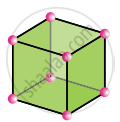
Cubic
a = b = c
α = β = γ = 90°
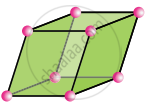
Rhombohedral
a = b = c
α = β = γ ≠ 90°
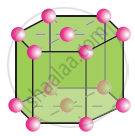
Hexagonal
a = b ≠ c
α = β = 90°, γ = 120°

Tetragonal
a = b ≠ c
α = β = γ = 90°
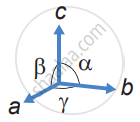
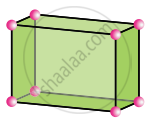
Orthorhombic
a ≠ b ≠ c
α = β = γ = 90°
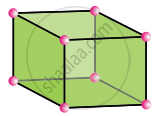
Monoclinic
a ≠ b ≠ c
α = γ = 90°, β ≠ 90°
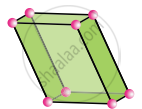
Triclinic
a ≠ b ≠ c
α ≠ β ≠ γ ≠ 90°
- Cubic – NaCl
- Rhombohedral – Cinnabar Cubic
- Hexagonal – ZnO
- Tetragonal – TiO2
- Orthorhombic – BaSO4
- Monoclinic – PbCrO4
- Triclinic – H3BO3
They differ in the arrangements of their crystallographic axes and angles.
Corresponding to the above seven, Bravis defined 14 possible crystal systems as shown in the figure.
APPEARS IN
संबंधित प्रश्न
The number of unit cells in 8 gm of an element X (atomic mass 40) which crystallizes in bcc pattern is (NA is the Avogadro number)
CsCl has bcc arrangement, its unit cell edge length is 400 pm, it's inter atomic distance is
The radius of an atom is 300 pm, if it crystallizes in a face centered cubic lattice, the length of the edge of the unit cell is ____________.
If ‘a’ is the length of the side of the cube, the distance between the body centered atom and one corner atom in the cube will be
Potassium has a bcc structure with nearest neighbor distance 4.52 A0. its atomic weight is 39. its density will be
Calculate the number of atoms in a fcc unit cell.
An element has bcc structure with a cell edge of 288 pm. the density of the element is 7.2 g cm−3. how many atoms are present in 208 g of the element.
Aluminium crystallizes in a cubic close packed structure. Its metallic radius is 125 pm. calculate the edge length of the unit cell.
An atom crystallizes in fcc crystal lattice and has a density of 10 g cm−3 with unit cell edge length of 100 pm. calculate the number of atoms present in 1 g of crystal.
Atoms X and Y form bcc crystalline structure. Atom X is present at the corners of the cube and Y is at the centre of the cube. What is the formula of the compound?
